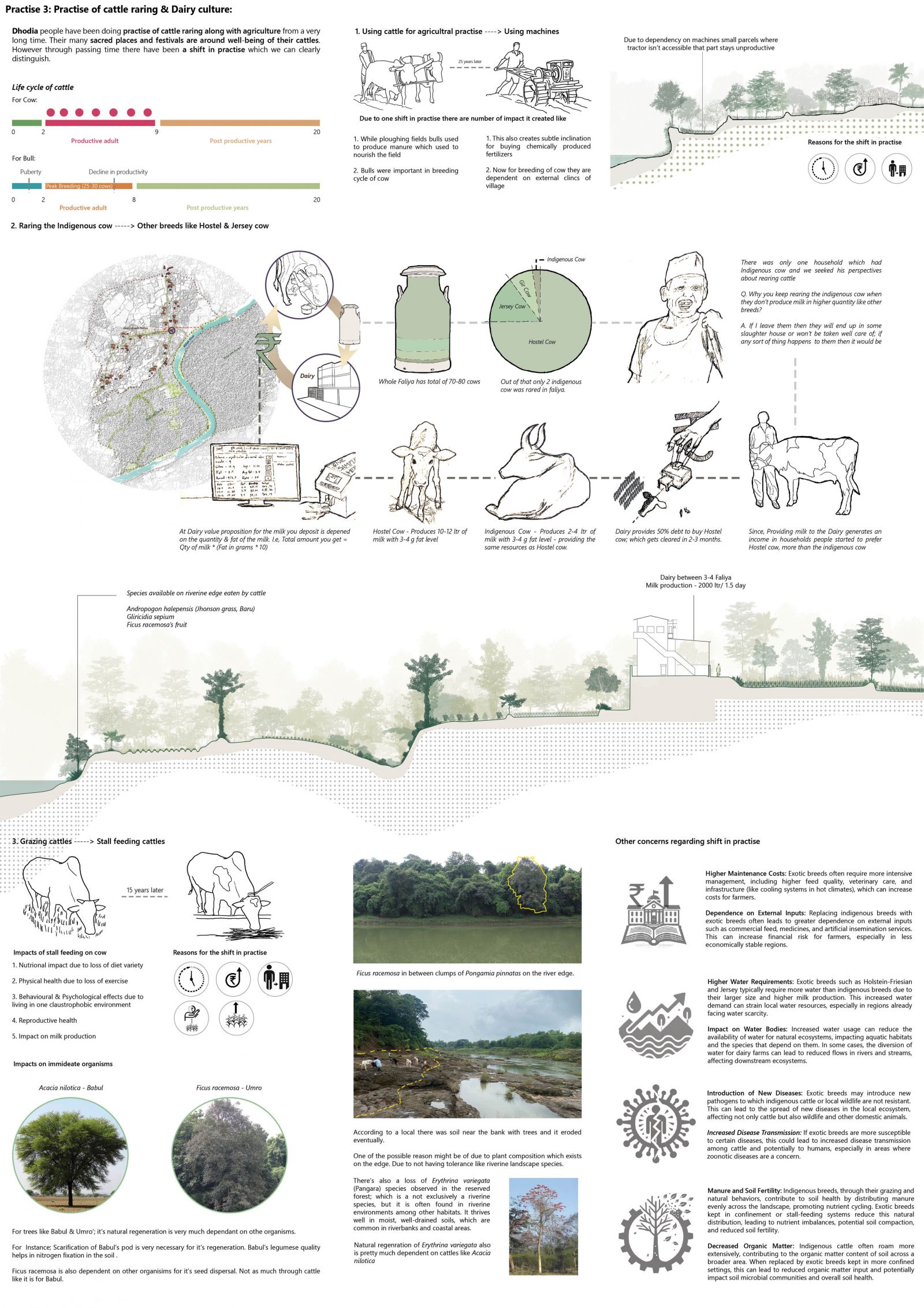Your browser is out-of-date!
For a richer surfing experience on our website, please update your browser. Update my browser now!
For a richer surfing experience on our website, please update your browser. Update my browser now!
Drawing upon the rich cultural heritage of the Dhodia tribe, the “Sacred Groves to Stable Banks” project intertwines traditional practices with ecological restoration to reinforce riverbanks in Goima, Valsad, Gujarat. By centering on the protective rituals of Baram Dev, the initiative transforms cultural reverence into meaningful environmental action. By curating a diverse array of rituals involving native species significant to the Dhodia people, the project fosters biodiversity and ecological resilience. This approach not only creates a positive impact on ecology but also establishes vibrant social spaces for individual families, strengthening community bonds. As the Dhodia tribe extends across southern Gujarat and into regions of Maharashtra, the use of Baram Dev serves as a replicable blueprint for integrating cultural heritage with ecological sustainability. By maximizing the performance of non-human elements and embracing a holistic design philosophy, the endeavor represents a harmonious blend of science, humanities, and design. It illustrates how indigenous rituals can catalyze positive ecological impacts, protecting both the environment and the communities that cherish it.
View Additional Work







